 Welcome to our new subscribers!! And if you haven't joined the conversation on Facebook, then find us @ptsonmission to continue to receive updates, encouragement, and information. Finally, tell a friend if you are benefiting from this site. If you have followed this blog for any length of time, you have probably noticed that my frequency in publishing content related to PT faith and professional practice has ebbed. This slowing is in no way related to a lack of desire to continue or burnout. It is mostly related to some major life events that have occurred so far in 2024. So, I don’t often report on personal topics but thought I would give a bit of an update on what’s going on in my household and life. The biggest change that has occurred this year is that my wife and I were blessed and thankful to welcome another baby into our home this past April! AND it was a little boy! If you didn’t know, I was very girl-heavy in my family, so the Lord was kind and gave my only son a little brother to balance out his four sisters. If you did the math, yes, I have 6 children in total now and am blessed beyond measure. I won’t deny that there is definitely craziness and stress that comes with a large family, but that doesn't mean it is not a gift. Maybe, I’ll write a blog in the future about having a large family as a PT because folks ask me about that quite often. But all that to say, adding another baby and restarting the baby phase has taken extra time and energy, especially as our older children are involved in different summer activities. The second update in my life right now is more work related because my company is merging with another health system. I was working at a local, independent academic center, but times in healthcare are getting harder and harder so bigger, more established systems are merging with smaller struggling systems. And that is exactly what has transpired for me. A larger, more expansive healthcare system out of Atlanta has agreed to absorb my hospital and all of our outpatient clinics. It’s certainly been a long process but currently we are in the major portion of the transition - actually training on and switching over every single system from workflow management to EMR to human resources. Needless to say, it’s been a lot of work outside of my normal patient care time as we roll into a completely different company. So, that has taken some time away. I have also gained some insight on work attitudes going through a merger process and will likely share some of what I’ve learned and struggled with through this process in a future blog post. I believe more of this will be happening to smaller, independent health systems and clinics. Lastly, something that is really exciting and I am super pumped about! Over the past year I have been working at building an online course for the general public! As a PT, you often get asked to solicit advice for pain problems, particularly knees and backs. I’m sure you’ve experienced this, “Oh, you’re a PT? Hey, my back has been bothering me lately, do you think you could…?” So, since healthcare can be complex to navigate and insurance companies are becoming increasingly difficult to deal with, I decided to attempt to take my clinic sessions directly to the patient/consumer. It’s certainly a new idea for me and I don’t know if it will be successful but the pilot course focusing on the comprehensive management of back pain will hopefully be released soon (targeting end of summer) and if successful may lend itself to additional courses! So, lot’s going on but I hope to continue to consistently blog about faith at work, research, and physical therapy but likely at a lesser rate. I would love to hear from you if you think some of the blog ideas sound interesting or just how your summer is going. Thanks for reading and following! Jason ***Check out my book "Rehab the World" written for Physical Therapists to encourage us in our workplace and prepare us to serve those around us. If you like, please leave a review and spread the word!!***
0 Comments
 Welcome to our new subscribers!! And if you haven't joined the conversation on Facebook, then find us @ptsonmission to continue to receive updates, encouragement, and information. Finally, tell a friend if you are benefiting from this site. Just recently, our small group was discussing the story in Mark chapter 12 of Mary anointing Jesus’ feet with an expensive concoction. We discussed the cynicism and criticism of some of the eye witnesses that didn’t understand this act of worship and highlighted that it is so easy for us to embody that same cynicism and critical spirit because of a lack of love in our heart for Christ and for others. And because many of us in our small group are health care providers, we then applied that to not only our families but also our healthcare workplaces. It was at that point that one of our members brought up a recent paper he had read regarding this very topic. As he shared, it was incredibly applicable and I requested that he send me the full article so I could also read it. The title instantly grabbed my attention. “Love Your Patient as Yourself: On Reviving the Broken Heart in Medical Ethics." And wow, what a fascinating essay it is. It reminded me very much of the surgeons general report on loneliness that came out a year or two ago because the authors very much identified a problem, provided the historicity behind the problem and even went so far as to invoke the necessity and importance of the fall of the explicitly Christian worldview as a component of the problem. I always find it intriguing when problems are identified in humanity and others recognize the value of the explicitly Christian worldview, even if those identifying these problems are not believers in Jesus or followers themselves. But what is that problem? What is the brokenness in our current healthcare system? A lack of love. Let that sink in. According to the authors, it is not information, it is not technology. It is not interpersonal communication but a deep, gnawing emptiness of love for people. The authors go on to discuss several cases of patients who expressed frustration of not being “seen” (in an emotional sense of the word) and just being treated as projects or experiments or cattle in interactions within the healthcare system. They then begin to look at why this ecosystem has shifted so dramatically and discuss that the shift away from healthcare in the home when physicians would make house calls and form deeper relationships may have played a role. They discuss how the movement away from the “art of healing” to the more objective “scientific pursuit” has impacted our healthcare landscape and how industrialization began to shift guiding principles from relationship - love and care - to expert and scientist in which bodies are more experiments than humans. Truly fascinating observations! They then, quite shockingly, point to the fact that what is missing is true love. Not feelings or affirmation or approval, but true, sacrificial love and care for our fellow suffering humans. They note that selfishness, pride, prestige, and greed have all replaced and undergirded our current system as true virtues have been left in the dust and buried in the name of progress. And according to the authors, the only way to fix the brokenness and recapture the heart of American medicine is to bring back the virtue of love by pointing to many truths and principles that are directly and uniquely embedded in the Christian worldview. I for one, completely agree with their analysis and think they are spot on. If we look around, we can see the same kind of pervasive negative attitude the authors describe and maybe you have even experienced that cold, calculated attitude yourself as a patient. So, then the authors offer a few suggestions to begin to fix the problem which included different ethical education in medical schools and more time serving the underprivileged in our communities. But, I think they miss the mark in their suggestions because while they rightly identify that what they want to see is found in the Christian worldview, they stop short of the real solution. We have removed so much of truth and God in our educational institutions so, if we are to recapture love in patient care, we should concurrently bring back bible study and/or encourage students to attend church and seek truth and faith found in Christianity. In short, a revival of the heart needs to not only occur but should be encouraged. And here’s where you and I come in as believing physical therapists (or other healthcare providers if you are reading this). You and I are the only ones who can truly love others in the way the authors advocate for, because we recognize Christ first loved us. So, we need to live and share that good news. As practitioners who spend extensive time with patients, who pay attention, we have the capacity to truly have an impact and bring love back into the main of the American healthcare ecosystem. The world has rejected true, worthwhile values while simultaneously longing for them because of the emptiness and darkness around them. It’s time we lead the way in bringing them back. Treat your patients excellently. Serve your patients well. Love your patients well. And let them know that you are able to do that because of Jesus, the only way. Jason ***Check out my book "Rehab the World" written for Physical Therapists to encourage us in our workplace and prepare us to serve those around us. If you like, please leave a review and spread the word!!***  Welcome to our new subscribers!! And if you haven't joined the conversation on Facebook, then find us @ptsonmission to continue to receive updates, encouragement, and information. Finally, tell a friend if you are benefiting from this site. One of the big ways physical therapists have an impact on patients in the clinic and in the community is through careful and thoughtful patient education. I try to make sure patient education centers on explaining concepts through relatable analogies and applicable studies. I have found that if you can cite and explain applicable studies in an accessible way, you can have a very positive impact. Today, I am going to provide one of those “go to” studies, if you will, that provides great information and helps me help my patient connect the dots on low back pain. Most everyone will deal with low back pain and it can appear for a variety of reasons but one of the most common reasons is repetitive loading. And there are some many daily activities that have high loads that can ultimately result in pain over time. Enter this Rholmann study. Activities of Everyday Life with High Spinal Loads So, Rholmann has published several studies regarding low back pain and force load but I have always appreciated this particular study because it centered on daily forces affecting the spine. This is a small sample size, but essentially they took patients and began to quantify daily force loads in an effort to better develop post-op spinal treatment and provide general understanding to force loads through the spine. After all the data and numbers were crunched (the study design is fascinating to read but I’m going to provide the nuts and bolts) essentially, they found 10 daily activities that have very high force loads which are listed in the chart in the study (Make sure you check out that graph). Those were then compared to a baseline force of walking. This is important because we can begin to educate patients about why proper lifting techniques are important. We can make patients aware of how often these force loads occur and how that can affect the tissue physiologically and lead to failure/pain if not balanced by healthy exercise. I also find it re-affirming that walking is not very forceful on the spine and is yet again proof that in chronic pain or other pain situations we need to encourage patients to walk. I would highly encourage you to look through the charts and graphs in this study and begin to incorporate this information into your patient education to make it more impactful and relatable. I hope you find it as helpful as it has been for me and my patients. Jason ***Check out my book "Rehab the World" written for Physical Therapists to encourage us in our workplace and prepare us to serve those around us. If you like, please leave a review and spread the word!!***  Welcome to our new subscribers!! And if you haven't joined the conversation on Facebook, then find us @ptsonmission to continue to receive updates, encouragement, and information. Finally, tell a friend if you are benefiting from this site. Many of us have already made goals for the year and are diligently working on or towards them. I hope that some of us have made some spiritual goals as well so that we grow close to the Lord this year. Honestly, it took me a little while this year to lock in on a spiritual goal or theme for this year, but a couple weeks ago, I read a passage in my study of Luke that was one of those “this is it” moments from the Lord and I wanted to share this with you because I think it has much application for our lives and our work as Physical Therapists. “Stay dressed for action and keep your lamps burning and be like men who are waiting for their master to come home from the wedding feast so that they may open the door to him at once when he comes and knocks. Blessed are those servants whom the master finds awake when he comes…You also must be ready, for the Son of Man is coming at an hour you do not expect.” Luke 12:35-37, 40 What is the main theme of the message? Be ready for Christ’s return. But not only that we should be ready, but that we should be doing that which honors the Lord when he comes back. Jesus says to be like those that are awake. When we are awake, we are doing things. Think about that. Think about all the things that we do in a day - the attitudes and emotions we exhibit, the decisions we make, the content we consume, etc. We don’t know when Christ will return but we will be blessed to be doing what honors him when he comes back.
So what’s the implication for us as? To answer that we need to think about where we spend most of our time - at our jobs. So, thinking practically, there is a higher likelihood that Christ would return while we are working than when at our home or at our churches. So, we should think about what we will be doing and saying when he returns. We want to be serving our patients well. Treating them with respect as image bearers of God. We want to make sure we are working hard and using all of our abilities for his glory. We want to make sure that we are sharing the Gospel and praying for our patients. We want to make sure that our words towards co-workers and patients are encouraging and not negative. We want to show respect for our bosses and those in authority over us. The list could go on and on but the bottom line remains: We want to be doing that which honors God at my work should he return while I am working. Is that your goal? And for the time when we are not at work but by ourselves or with our families, we need to think about the same thing. When Christ returns, I want to be loving and caring for my wife well. I want to be nurturing, teaching, and playing with my children well. I want to make sure that I am speaking kind words and having a thankful attitude. If I am not being actively involved in social activities with my family or projects around the house, then I want to make sure that in my downtown I am consuming media that edifies and doesn’t degrade or glorifying God in my hobbies. I believe this is an important idea to think about because Jesus tells us that for those of us that are awake when he returns (active and doing that which honors and glorifies God) are blessed. We need that eternal perspective as a challenge and motivation but we cannot begin to live like I’ve just described without the blessed grace and mercy of Jesus. We need Jesus in order to live for him. So, surrender your life to Christ. Live for him in these days. And be doing what would make Jesus smile when he comes back. Jason ***Check out my book "Rehab the World" written for Physical Therapists to encourage us in our workplace and prepare us to serve those around us. If you like, please leave a review and spread the word!!***  Welcome to our new subscribers!! And if you haven't joined the conversation on Facebook, then find us @ptsonmission to continue to receive updates, encouragement, and information. Finally, tell a friend if you are benefiting from this site. Well, with all the overseas medical work and the holiday season, there was so much to talk about on the blog that there have been very few additions of “Journal Club.” So, I thought I’d kick off the new year with a blog highlighting another interesting study. This study is going to be geared to those PT’s who work in the neuro world as it looks at evidence to establish clinical practice guidelines for locomotor function in a myriad of neurological diagnoses including stroke, incomplete spinal cord, and brain injury. So let’s dive in! The team of researchers gathered randomized control trials of different neuro-intervention studies focused on individuals with acute onset central nervous system injury. They wanted to look at those interventions that best helped the patient return to a healthy walking speed because walking is a critical component for independent function and is often the most affected motor skill affected by CNS injury. Clinical Practice Guidelines to Improve Locomotor Function in CNS Injury After compiling all the studies and analyzing all data, the researchers came to several important conclusions. They found that there was strong evidence for walking training at moderate to high intensities to improve gait speed and function. They also found that virtual reality training can help as well. This makes sense given that walking is a very integrated task so the best way to improve that is to challenge it at higher intensities. Interestingly, they found that there was weaker evidence that strength training and or circuit training improved walking speed and distance. They also assessed some evidence on body weight support treadmill training or robotic assisted training, which I will let you read so I don’t spoil the whole article. 🙂 So, what do we take away? In situations of acute CNS injury, the patient needs to begin walking and moderate to high intensities and we need to make sure we can accomplish that safely. It is not wrong to incorporate strength training and circuit training but it does not have the same effect on gait speed and distance as actually training the function and those are two key measures that are important to recover for the sake of patient independence and decreasing fall risk. Jason ***Check out my book "Rehab the World" written for Physical Therapists to encourage us in our workplace and prepare us to serve those around us. If you like, please leave a review and spread the word!!***  Welcome to our new subscribers!! And if you haven't joined the conversation on Facebook, then find us @ptsonmission to continue to receive updates, encouragement, and information. Finally, tell a friend if you are benefiting from this site. I really love Christmas carols and this season is when I can sing them to my heart’s content. I love Christmas carols because, yes, they are familiar and help me to immerse myself in the Christmas season, but the main reason I like them so much is because of the simple truth they all proclaim. They all proclaim the truth of the coming of Christ and the truth of what he will do both in his first coming and when he comes again. It is those truths that are tucked away in the lyrics that help me focus on what matters during an often fun-filled, yet busy season. Take, for example, one of my favorites, “O Holy Night” and just read these lines and let them sink in for you this season. A thrill of hope a weary world rejoices, for yonder breaks a new and glorious morn. Fall on your knees; O hear the angels voices! Oh night divine, O night when Christ was born. Did you catch it? The coming of Christ is the hope for this weary world. The world around us is quite weary. You may even feel that weariness this season. But the coming of Christ is like a new sunrise, a clean slate. It is something that cuts through the weariness of our days and brings joy.
Praise the Lord that Jesus came into this weary world to provide a hope and a future for all who believe in his name! Merry Christmas! Jason ***Check out my book "Rehab the World" written for Physical Therapists to encourage us in our workplace and prepare us to serve those around us. If you like, please leave a review and spread the word!!***  Welcome to our new subscribers!! And if you haven't joined the conversation on Facebook, then find us @ptsonmission to continue to receive updates, encouragement, and information. Finally, tell a friend if you are benefiting from this site. The last few blogs have hopefully given you a good idea of the region and the work we did. It has been fun to share the experience with you and reflect on all that was accomplished both in writing and in pictures. But when you work abroad, you also want to go in with an open, humble heart to let God teach and change you. Many times, stepping away from your normal routine and being in an unfamiliar place allows God to work on your heart in different ways because you are in a much more dependent environment. So, I wanted to share four thoughts from God that have challenged and encouraged me and I hope they challenge and encourage you. Be Thankful You Can Gather at Church Openly. We couldn’t really say the word “church” in our region so we used a different term. But for the handful of local believers that are in Jubilee, it continues to be difficult to gather together despite the great need for them to be able to encourage each other. There are several understandable reasons why it is difficult to gather including potential harm, suspicion, clan politics, etc. Even the local team of workers has to be somewhat strategic as to how and when they meet together and we were privileged to be able to join them for a house fellowship one afternoon. It was special. Anyway, it really made me reflect on being thankful that I can openly participate in my local fellowship/church. That is an incredible gift and helped me better understand the writer of Hebrews when he admonishes us to not give up the habit of meeting together (Heb. 10:25). It is vital to our spiritual life and you don’t know what you have until you don’t have it. Plug in to your church, attend, serve, and grow. It is a gift. Take Advantage of Your Ability to Speak About Christ and the Gospel Whenever and Wherever You Want. This may be one of the most powerful reflections and encouragements to me personally and hopefully to you as well. The reality is that even though the culture around us in our American context may dislike the truth of God’s word and the reality of the Gospel, it generally is still not openly hostile to it. Now, you can make the case that it is changing, but compared to many places in the world (like our location) we still have an incredible amount of religious liberty. So, what an opportunity we have to speak Christ to those around us. We should not squander this opportunity! Being in this region of the world for 10 days encouraged me to continue sharing my faith here because I saw the difficulty that can arise in a different context. We should be telling everyone around us about Jesus. There are people around me that are just as lost as those in the region we were working. The freedom and ease to speak the Gospel here should certainly not be taken for granted. Live Differently Because Truly Living Differently Will Cause Wonder. This may seem like a no-brainer but sometimes in our context there can be very little difference how we, as christians, live versus many non-believers. So make it a point to live different. This was especially evident in our region. When the norm is to have multiple wives (and yes, we did have actual conversations about this with a few locals) and you have one wife that you love and are committed to, that begs a lot of questions. Especially when there is joy and delight in the marriage. Or, when a man is involved in the lives of his children and family, that also screams out “different” because that is not really a thing for the context in which we were working. These two examples actually crossover here. If you are married, truly love and edify your spouse and stay committed to one another. Invest in your children and talk about your kids as a delight. If you are single or married, choose to live a pure life. But here there are other ways to live differently here. It could be how you spend your time, your finances, or avoiding complaining, or purposefully sharing the good news of Jesus to those around you, etc. But the bottom line is: to be a bright light, so much hinges on how we live and that needs to be markedly different than the world around us. Finally, Remember Those Families Living Abroad and Sacrificing So Much to Bring the Good News of Christ to the Far Edges of the World. That, for me, is one of the many joys of partnering in short term work with long term teams: the new relationships that form and the opportunity to get to know their families. When you grow these relationships and partner in their discipleship work, all of the sudden what’s going on with them and through them becomes incredibly personal to you. And it is much easier to pray, encourage, and support those that you know on a personal level having served alongside them. So, if you go abroad make the connections and commitments to support them long after you are gone. And even if you can’t go, remember your brothers and sisters laboring all around the world and lift them up to persevere in their work and intercede that God would grant them to see fruit from their labors. Do any of these thoughts resonate with you? I would love to know which ones and why! Jason ***Check out my book "Rehab the World" written for Physical Therapists to encourage us in our workplace and prepare us to serve those around us. If you like, please leave a review and spread the word!!*** 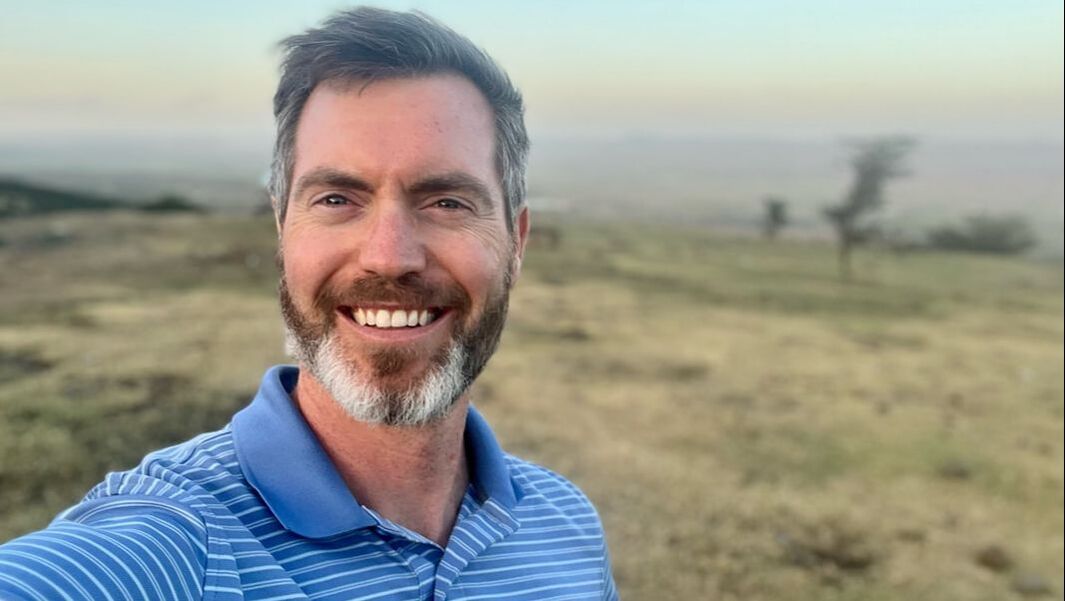 Welcome to our new subscribers!! And if you haven't joined the conversation on Facebook, then find us @ptsonmission to continue to receive updates, encouragement, and information. Finally, tell a friend if you are benefiting from this site. Today I am excited to welcome my third teammate, Ryan Carrick, to the blog. He has some wonderful insights on working together and team collaboration that really impacted him from his time in N. Africa. Ryan is an Occupational Therapist with a history of work in home health and neurological rehab but is currently working as a professor in the OT department at Augusta University. I hope you enjoy his perspective! "When a healthcare provider thinks of the term interdisciplinary or even collaboration, mental imagery is often based on prior experiences. Positive or negative, a healthcare provider moves forward in clinical practice working with other disciplines to an extent the paradigm of collaboration allows. A frame of reference for working as a team has the potential for exponential client benefit, whether side by side or even in silos. My own preference for collaboration leans towards interdisciplinary versus multidisciplinary or working together to solve a puzzle rather than simply side by side with another professional. I am an Occupational Therapist (OT) and absolutely value other health professionals’ experiences and knowledge. Unique expertise is cumulatively valuable with an interdisciplinary team. I’ve experienced this phenomenon both locally and internationally. Most recently, I was privileged to join two physical therapists in North Africa. Before North Africa, I’m thankful to have experiences in Rwanda and Peru to foster the positivity towards teamwork. Additionally, working with fantastic teams in clinical and academic settings in the United States gives credibility to the attitude of gratitude. Working in non-sharing, non-communal environments have also occurred, however they’re growing and learning opportunities just the same. Various experiences as a healthcare provider create a personal story, and therefore, attitude towards collaboration. These attitudes and experiences can be documented and studied by counting or by quoting. If I were to study what occurred in North Africa, I’d reflect on the qualities of the experiences. For example, both qualitative and quantitative research have their complimentary purposes; but it is hard to overlook the vast opportunity of storytelling to grasp the full picture of a lived experience without appreciating the qualities of a healthcare team. The story of the 2023 North Africa rehabilitation team began with a divine appointment between a doctor* and a physical therapist (PT). Both men shared a passion for helping people who are overlooked or even looked away from. Jason was the PT who was obedient to a call for service. He said, “Yes, I am here. Send me.” Then, he prayed some more. He saw the value with interdisciplinary care as well. He knew me and a few others that shared a desire for teamwork and for serving. Including Jason, three men said yes – 2 PTs and 1 OT. These three therapists chose to travel to an area of the world where most people would ask, “Why there?!” Well, a simple reply of “Why not?” suffices. We wanted to build bridges as a team of physical and occupational therapists coming from the United States, where, oddly enough, traditions can sometimes override knowledge and desire, causing anything but bridges. Speaking from experience, sometimes it takes stepping outside of a normal life flow to recognize what one may be overlooking. Let’s just start there with the theme “collaboration abroad.” Collaboration started before we left on a jet plane. Teamwork building doesn’t simply happen with a scheduled protocol or tested theory. Teamwork truly happened when all members intentionally leaned in. We committed flexibility and intentionality to each other and to the work ahead of us. We were also thankful for a committed physician as “boots on the ground” in North Africa. Thankfully, this physician was fluent in the native language, understood the culture context and educated all three of us with regular meetings to prepare for North Africa. We came to a consensus on potential patient, caregiver, and healthcare provider materials to produce and send ahead electronically. Then we sought support. Serving in a foreign country requires sacrifice. The sacrifice was a welcomed burden carried by us and by our families at home. Yet, the sacrifice us three therapists thought we experienced were microscopic compared to the healthcare providers we met living in North Africa. Arriving in North Africa, we were met with new smells, lack of personal space and a massive culture shift. That’s just the perception of 3 tired, privileged Americans operating out of exhaustion. We were also met with smiles, handshakes (all with the right hand) and communal plates for eating without utensils. Those smiles. Those smiles were simply part of the affirmation of obedience with the sending. Operating with an awareness of power greater than ourselves, smiles became less necessary for external confirmation of why we were there. We knew (some) why we were there – to serve. The rest we didn’t find out until we took more steps forward. A 14-hour plane flight was no longer on our mind when we heard more about the needs of the local people groups. We saw poverty, yet resilience. We saw ignorance, yet thanksgiving and joy. Imagine a 14- or 15-year-old mom who loves her baby boy so much, her joy radiates. She just knows she loves him, but why can he not sit up? She’s been holding him. The proceeding conversations (through a translator) helped me to understand a deeper level about the dominant religion and culture. She had been abandoned and didn’t want the same for her son. She wondered why he was different, even as an infant. So, she hid him away from others; he hid in her arms. Keep in mind, all three therapists now in North Africa have spent their whole careers with the adult population. Pediatric theories, reflexive patterns, normal development, and intervention strategies were distant educational memories. This mom was in front of me with this 18-month-old child. What do I do? I had traveled halfway around the world. Give me an 80-year-old patient who had a stroke, and I can write a plan of care (I was equally excited to see those patients too.); however, an 18-month-old? It was not my ability or skill that spoke for me or the translator. The next 20 minutes walked through some developmental and motor learning education that surprised me as it came off my lips. Even more surprising was this mom’s receptiveness. She soaked it up and was immediately positioning her child in strategies that facilitated his development through normal play. She also felt comfortable allowing him out of her safe embrace. He stretched and made his presence known. I later found out that this same mom had come to the other physician’s clinic* in hopes of answers, months before we showed up. The day the mom was at the clinic, other moms had their children with disabilities present. The physician told me, this mom immediately started weeping. Her tears were due to a year of hiding and fear of rejection and denial. She finally, literally, let go. She knew she was not alone. There are many other stories to share. Suffice it to say, a single healthcare provider makes a difference. However, a collaborative team makes a difference in others and us. I have shared the pediatric story with people who serve in areas other than healthcare and have learned of similar phenomena where they became aware of power outside themselves. There is power in numbers and there is power in He who sends. I am thankful for our interdisciplinary team. I am thankful for the physicians who had conversations with patients and caregivers before us and the PTs and OT who found a bond greater than ourselves. Did I mention the translator present with me, and the young mom was an indigenous trained nurse? What a team!" With all sincerity and veracity, Ryan M. Carrick, PhD, MHS, OTR/L ***Check out my book "Rehab the World" written for Physical Therapists to encourage us in our workplace and prepare us to serve those around us. If you like, please leave a review and spread the word!!***  Welcome to our new subscribers!! And if you haven't joined the conversation on Facebook, then find us @ptsonmission to continue to receive updates, encouragement, and information. Finally, tell a friend if you are benefiting from this site. Today, I am excited to have one of my team members, Matt Bounds, join the blog and offer his thoughts and reflections from our N. Africa experience. It was a joy to have Matt on the trip and I think you will be challenged by some of his thoughts. He also has been a part of this blog before so you can catch up on his faith and work place blog by clicking here. "I recently was given the honor to go on an amazing adventure to northern Africa. Me and a couple of other therapists took off under our Father's provision and direction to find what He had in store for each of us in what turned out to be a whirlwind of a trip. I want to start by giving some background on myself. I am a 23 year military veteran. I spent 6 years in active duty and the rest I have served in the reserves. I have deployed three times over that 23 year period in support of various contingencies and missions. With this came times of extreme loneliness, separation anxiety, depression, and spiritual warfare. I am now working through this and God is healing in his own time. These experiences shaped me at my core into who I thought God wanted me to be. A strong, capable, independent, mission focused individual, which it did, but I’m finding that it also made me hard and distant, especially to the ones I love most. I say all this to lay the groundwork for what happened on this trip. We take off and I am immediately making parallel comparisons to my previous deployments. The flight, the anticipation, the fear of the unknown all slipping into my subconscious. Then we land, and after a brief introduction to our host home are whisked off to another city two hours and 6 armed checkpoints later. We then check in to our humble hotel and settle in for the night after dinner. It is here that I am met with the demons of my past trips that I had been trying to shake off since we took off. The fear of being alone in a foreign place and surrounded by those that might not take too kindly to why I am there. We wake up the next morning and I put on my brave face and take off into the days adventure. This is where God starts to rewrite my trauma into his perfect will. He introduced me to a doctor who has labored in this unforgiving and spiritually desolate place for years, and yet has the fortitude to continue to press on every day doing what God has called her to do. We then enter homes where we minister to families seeking any assistance they can get for their loved ones. We are able to use our God given abilities to provide life-giving teaching and instruction to three amazing women of God who are seeking every opportunity to help their community and share his love. Unlike my previous trips in the military, where my work centered on taking life, we were instead giving life through our interactions throughout this day. The next day we are able to take part in their pediatric clinic and provide what little information we can gather up from our days in PT/OT school to pass along to these workers, but God showed himself powerful once again. We all were empowered beyond our skill/knowledge level and were able to recall information tucked back many years prior to assist in treating the children. After our time in this city we headed back to our home city and settle in with the host family. Knowing my growing anxiety and struggle with loneliness God worked the circumstances where I had to stay with the host family in their home due to lodging issues. This was like a wave grace that washed over me in this moment. I was able to relax and rest in peace surrounded by familiar, God loving people once more. We were able to minister with their team a few more days, entering homes, meeting believers, hearing their stories, hiking mountains, and seeing the city from a literal thousand-foot view. We prayed as the sun rose one morning over the city, which was a powerful moment of realization of God’s sovereignty and power over the whole Earth. And not just the micro-universe we create in our little safe bubbles. We continued our work and observation, then headed home to the safety and security of the good old U.S. of A. As I read this it sounds very choppy, which is okay because it still is very choppy in my head as well. This trip shook a lot of things loose, and I continue to wait for everything to settle into one coherent thought. But, as I breakdown what happened over there, it has occurred to me that God was working in me while I thought I was there to work for Him. What I mean by that is, He was healing my past scars and showing me that they were merely training events placed in my life to prepare me for his work. This trip has been a soothing balm placed on my life and memory. I now have a memory of a mission that was God inspired, God ordained, and God powered. I have been in the presence of loneliness and been lifted up by my brothers instead of being left to flounder in doubt and fear. I was encouraged again and again throughout our trip that even when things are hard and lonely, our God is sufficient to help and hold us strong when we are faithful to follow his calling. Finally, I was taught the true nature of the Church. Christ’s church is universal, not a building set on manmade foundations. It is a web of believers that stretches to the far edges of the world and it is alive and well among his people. The believers we met in these dark places shine like a light on a hill. They can be seen from miles away and are spreading their light wherever they go. So, I encourage you to sluff off the baggage and weights that hinder and slow you down. Take on our Father's yoke because it is light and continue your journey. Fear is merely focusing on events of past trauma, and anxiety is focusing on what might happen in the future. Instead, stand firm exactly where you are and focus on Christ and his work here and now. He will hold you strong and use your past experiences to shape your future endeavors." Matt ***Check out my book "Rehab the World" written for Physical Therapists to encourage us in our workplace and prepare us to serve those around us. If you like, please leave a review and spread the word!!*** Welcome to our new subscribers!! And if you haven't joined the conversation on Facebook, then find us @ptsonmission to continue to receive updates, encouragement, and information. Finally, tell a friend if you are benefiting from this site. And if you missed part 1 of the N. Africa blog series you can get caught up by clicking here! Several years ago I read a book that really impacted my views on international dscplshp work. That book was entitled “We are Not the Hero” by Jean Johnson, a veteran global dscpl maker. There were so many humbling thoughts and challenges in that book, but one of my main takeaways dealt with planning and thinking long range. She stated that before we do any type of work abroad we need to consider how our day one will affect day 10, day 100, and day 1000. In other words, we need to take extra care to consider how what we do in one moment will have an effect 3 years down the road. And this idea was at the center of the 4 days in our second city, which, for security reasons, we will refer to as Jubilee. Because of the dominant religious belief of the unreached people group in the region, we had to be much more strategic in our work. So, we had two strategies. One of those strategies was to teach and train a handful of locals that were a part of Jubilee’s sports commission because soccer tournaments in that region are becoming wildly popular. The other was to complete more home visits with particular families in the region so that our team on the ground could further develop relationships. And this is the long range thought in short term work that I am referencing. Unlike our training in the first city, none of the sports commission folks we trained were followers and none of the families of the targeted home visits were followers. But, the long term team living in Jubilee wanted to use us to deepen those existing relationships, serve and love these people and families like Jesus, and have the opportunity to spend more time with them by providing them a usable skill and also rehab care. That will have much more impact for day 100 and day 1000. With the plan in place, we went to work. Over the next couple of days, two of my team members, along with one of the full time team members living in the city went and ministered to a few families in the outskirts of Jubilee. And man, what an experience that was. These guys did awesome. They trekked out to a little village to visit one particular family whose patriarch was dealing with some orthopedic issues that were limiting his daily function. They were very peaceful and welcomed our team gladly. This allowed for assessment and treatment of hip abnormalities to help make the gentlemen more functional. It was a great example of what I like to call “bush PT'', just doing rehab out on a mat under a tree in the middle of a village. Prayerfully, the full time team will have an opportunity to speak the good news to this family in the months and years ahead because of the trust and relationship building through the home visits. While those guys were out in the bush, I was working with another full time team member putting on the sports medicine training with the men (and surprisingly a few women (which we learned is not necessarily normal but in that past year or so women and girls were being allowed to participate in sports and coaching which is awesome) that were part of the sports commission. This was also a strategic opportunity to deepen relationships with these individuals and provide them with a targeted skill to function in the community. So, we spent one morning in a lecture format going over proper warm-up techniques, common soccer injuries, phases of tissue healing, ways to help athletes recover through those different phases, etc. It was a unique and rewarding experience. I don’t have pictures from that lecture but a local photographer was there snapping photos so later that evening we noticed we had made the local facebook news page. The next day we all met at the tournament soccer field and did a morning lab in which we reviewed the previous day's material, had them practice all the different exercises and stretches, and practiced taping ankles. It was a great time and after they were checked off with some of the skills, we presented them with certificates as meeting the necessary requirements for “Sideline Technician.” The third day in Jubilee, we had the opportunity to meet, encourage and provide some training to a local physical therapist working at an inpatient rehab center. He was a fantastic young man doing great work but benefitted from some time with us in an informal question and answer morning. While there, we were also able to help fit and train some of his residents in using different assistive devices and wheelchairs as many of the residents were patients with amputation. It actually was an impressive operation for a small entity in a city seemingly on the edge of the world. I hope one of your takeaways from these days is that even if we aren’t directly working with followers or directly speaking the good news, we can still utilize teaching and training if we consider long range impact in conjunction with a full time team on the ground. I am both hopeful and optimistic that the days of investing in all of these relationships will yield fruit in the lives of those we interacted with through the long term team living in Jubilee.
On our last day before flying out that evening, we had the privilege of sharing a lunch meal of camel, rice, and bananas with one of the handful of local believers in that city. Nolan (surname for security) was an amazing guy with an incredible story who started a farming operation as a means to employ others and make a living. In a region of the world that just had this aura of oppressiveness and darkness because of the dominant religion, what instantly stood out to me in being around Nolan was the indwelling joy that he exuded in knowing Christ. It was evident and tangible in his interactions and conversations. He had a contagiously joyous demeanor and smile. We were able to visit and support his shop and he even took us to visit his farm where we prayed over him and his business. It was a sweet time of fellowship and a great reminder that truly knowing and following Jesus gives otherworldly joy. Do you have that kind of joy and hope in our dark and broken world? And if you do, are you willing to share that with those around you? Ponder that in your heart. Jason **Check out my book "Rehab the World" written for Physical Therapists to encourage us in our workplace and prepare us to serve those around us. If you like, please leave a review and spread the word!!*** |
Awesome ResourcesThe Gospel at Work Archives
May 2024
Categories |
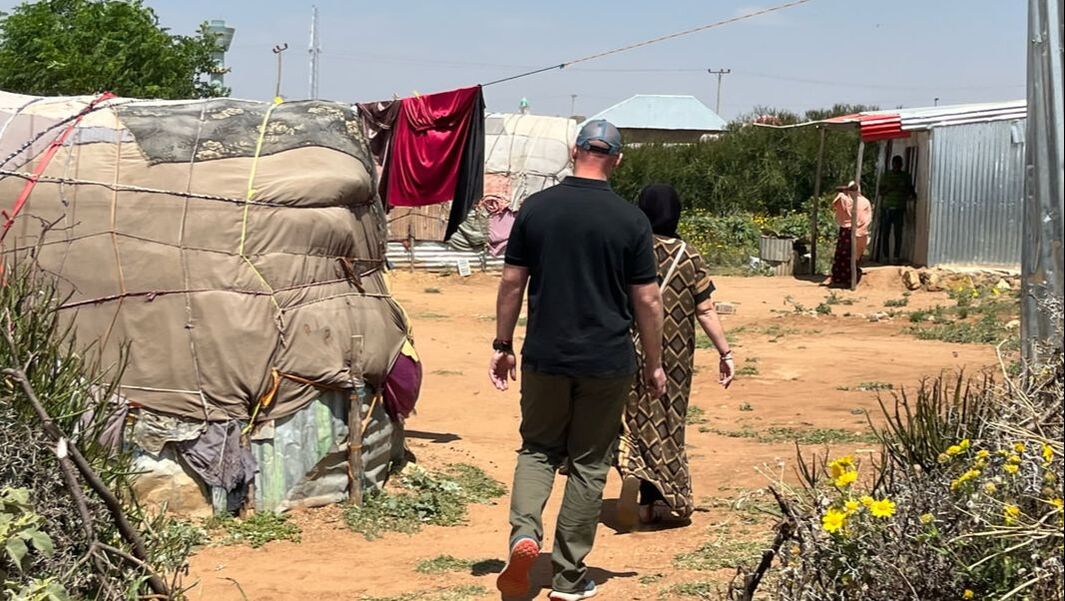
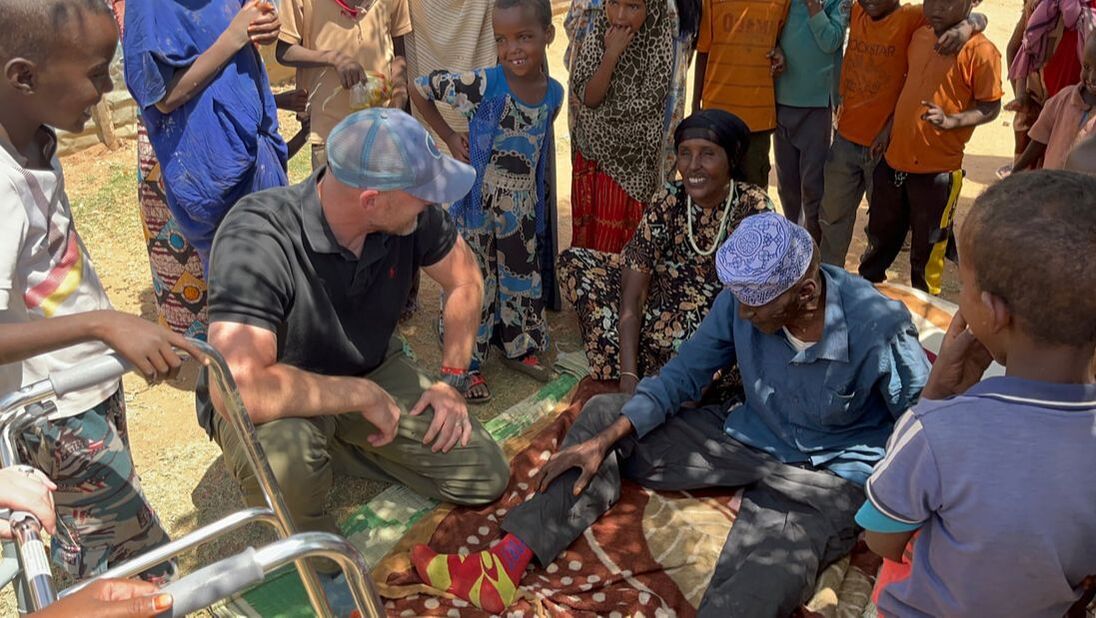
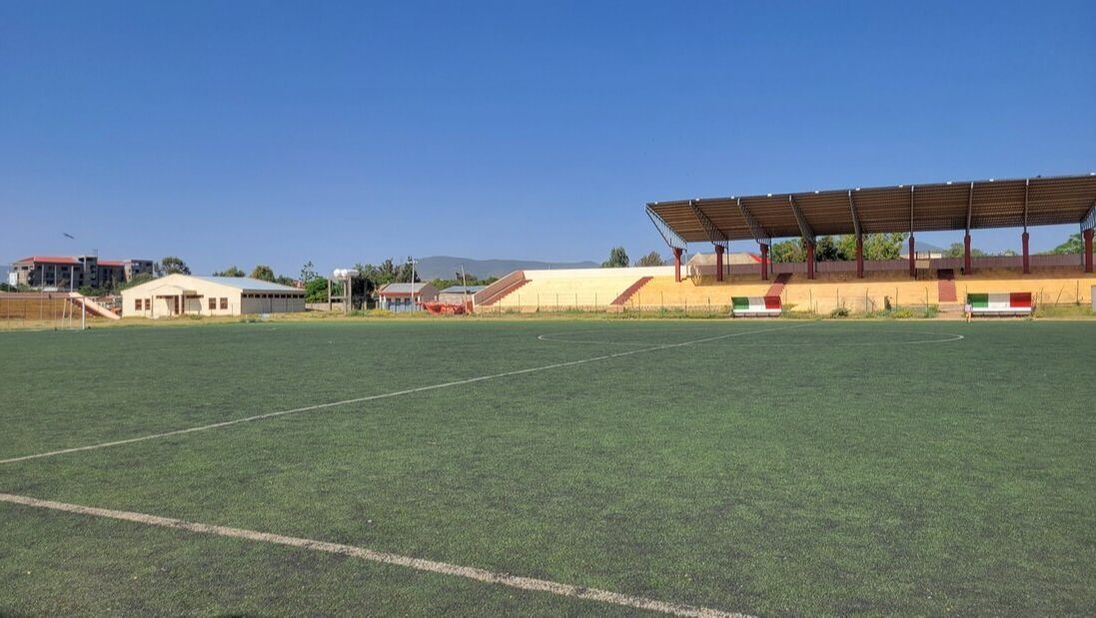
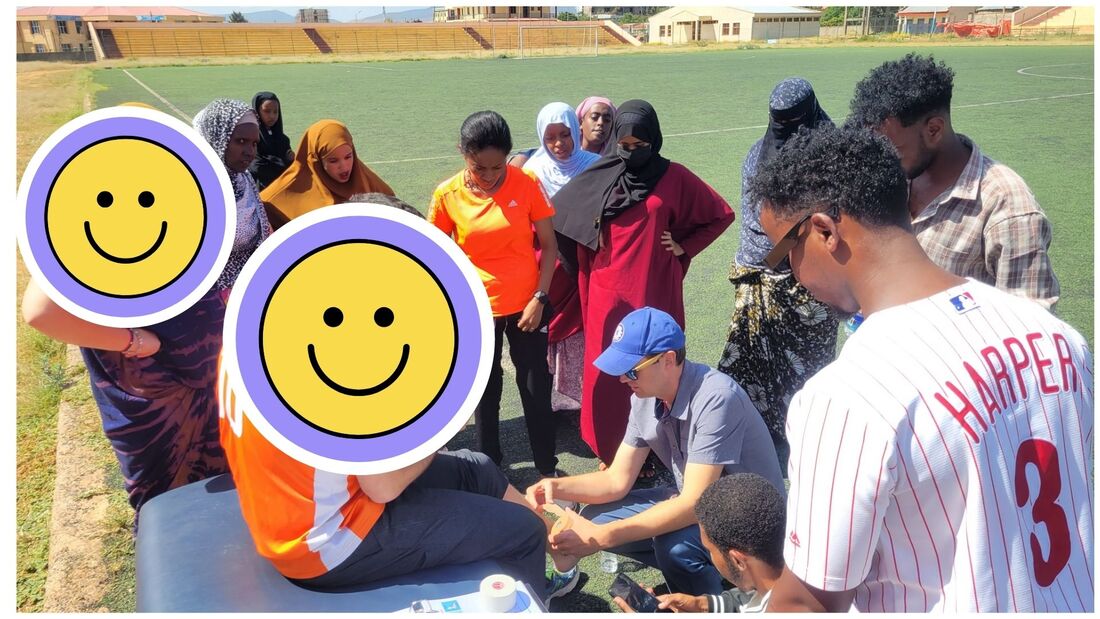

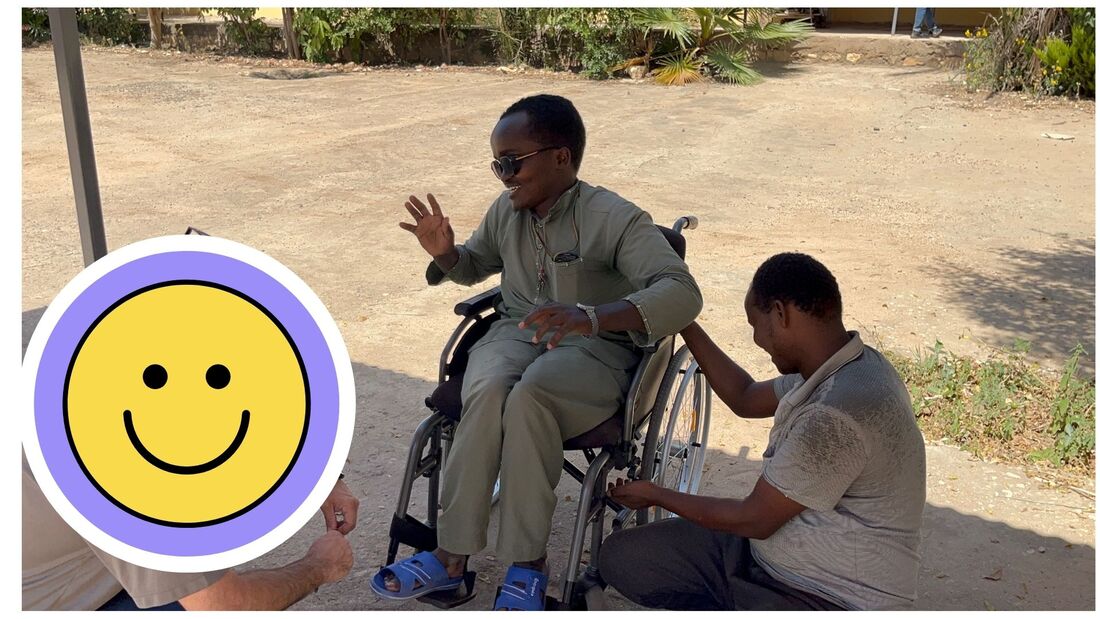
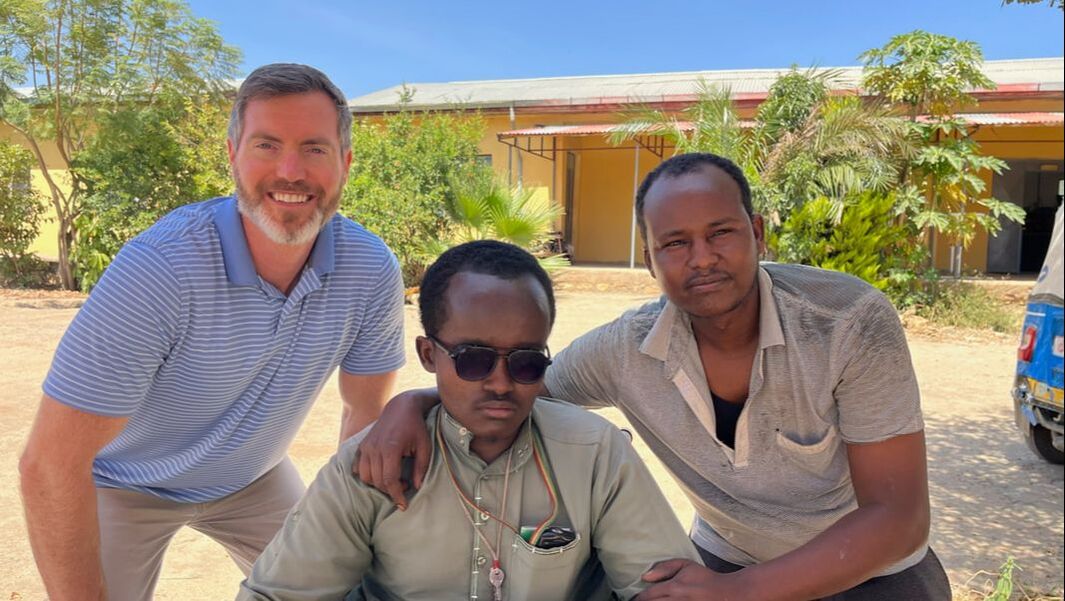
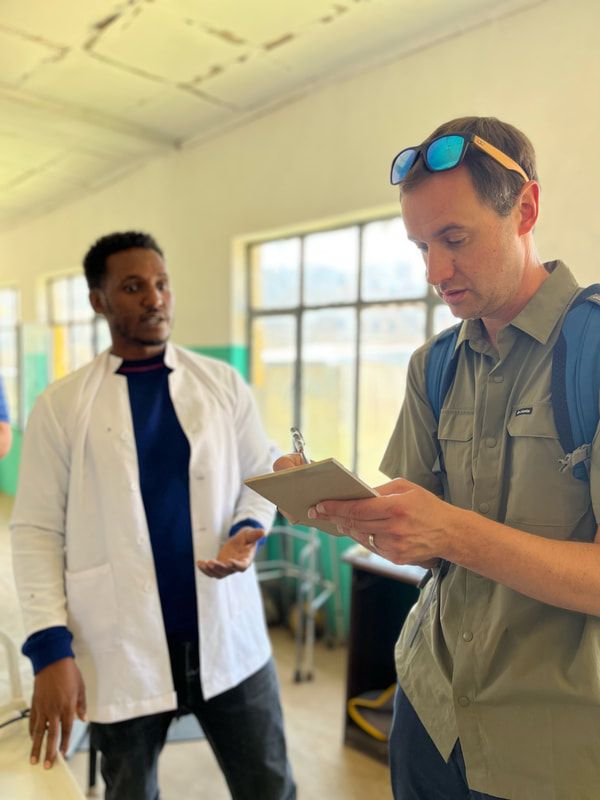
 RSS Feed
RSS Feed